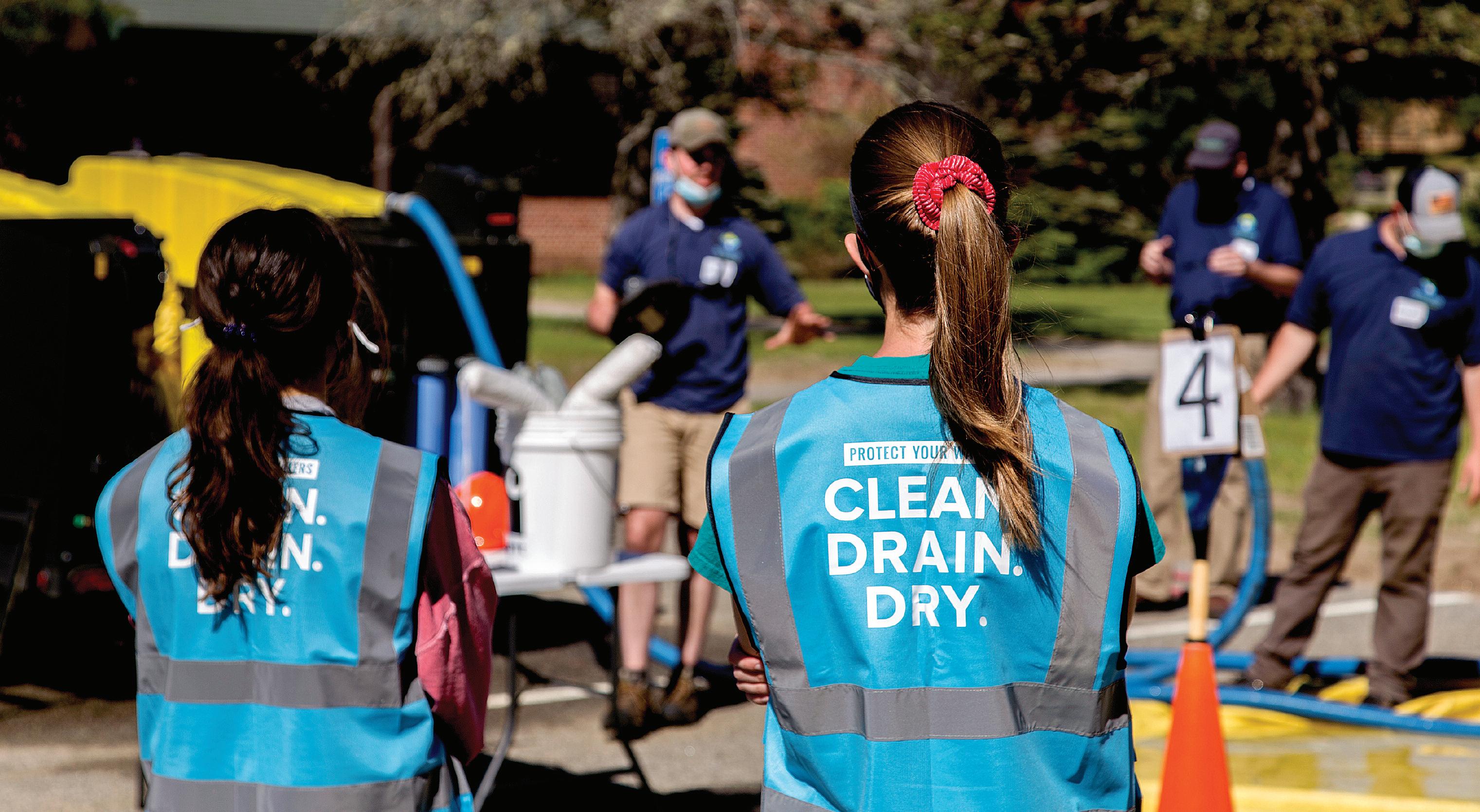
3 minute read
Essentials of bushwhacking
By SPENCER MORRISSEY
Adirondack bushwhacking offers great potential to those willing to put for the extra effort. When exploring off trail, you have the chance of wildlife experiences, solitude, unique views and seeing what only a handful of people get to see — if anyone at all.
With the Adirondack Park being more than 6 million acres in size, you can only imagine the potential for hiking if one was to explore outside of the contour lines. There are thousands of mountains and bodies of water to be experienced, but only a fraction of them are available by means of a trail. However, before you decide to venture off in the forest, here are some essentials of bushwhacking you may want to consider.
Bushwhacking should not be taken lightly and should only be considered by those with experience in GPS use and/or a map and compass class. Navigation is essential for a fun and safe time exploring between to contour lines.
Bushwhacking also has inherent dangers not seen on most hikes where trails are involved. Some of these include, but are not limited to, getting lost, thick undergrowth, blowdown, injuries, confrontation with hunters, and extended time for rescue and location in the case of an emergency.
Bushwhacking has become a much more interesting and admired pastime. The Adirondack 100 Highest has become popular as well, where a large majority of the peaks are truly trailless. But don’t let the pressures of trying something new and exciting glaze over common sense. Do your homework, ask questions, be prepared, have a game plan and an emergency plan, proper gear and, most of all tell, someone where you are going.
Gear associated with bushwhacking is like that of any day hike or overnight excursion but should also include a couple more items that might not always be in your pack.
Continued from page 14 1. Map and compass — should already have 2. GPS — optional only if you have an area map and compass as a backup 3. Eye protection 4. Gloves — to protect hands from branches and rock scrambling 5. Sturdy boots, over the ankle — Low hiking boots and trail running shoes have their place, just not in bushwhacking. 6. Long-sleeved pants and shirts 7. Extra food — Bushwhacking is much more demanding and requires more energy. 8. Emergency kit — just in case you should have to spend the night in the woods.
Some items in your emergency kit might include matches, and emergency blanket, fire starter, a whistle, dry socks, a dry shirt, a light jacket, two grocery bags or large food storage bags (just in case your boots get wet to use as liners between socks and boots), a first-aid kit and a water filter.
Bushwhacking can be fun, but it can also be one of the hardest things you have ever put yourself through. Be prepared and make it harder for the trip to be one of those experiences you never wish to do again. Remember that bushwhacking isn’t for everyone, but it should also be one of those things everyone should try once.
Some of the best ways to get comfortable exploring is to go and learn from someone you know and trust. That could be a New York state licensed guide or a backdoor buddy. Also, start small and work your way up to something a bit more challenging. Don’t dive in because you might not like the water. Dip a toe in, and start there. By no means does this reflect an attempt to replace good judgment, experience, training or a good guidebook.

Want to Embark?


Blowdown Name:
Subscribe
4 issues per year
1 Year $10.00 2 Years $20.00
Address:
City/State/Zip:
Mail to: Embark PO Box 318 Saranac Lake, NY 12983 518-891-2600 circulation@adirondackdailyenterprise.com









